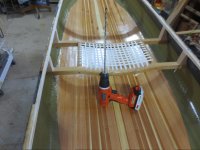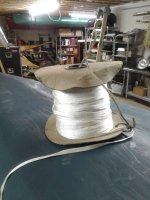McMaster has 10-24 stainless up to 6 inches. Those are phillip head rather than carriage.
I have not needed anything longer than 6 inches, excepting for the stern seat in a deep 20’ Prospector.
The last time I ordered from McMaster Carr I needed some commercial account number. Maybe you have one from the car shop? I had one from the University, but no longer.
I have ordered from the (near identical, think Toyota/Honda) Grainger catalog without commercial-user difficulty. (Caveat; this was weird stuff, like through-wall Motel-style 220 heat/AC units, not SS machine screws or carriage bolts).
I have been lucky with my long/odd stainless steel needs. There was an old-timey independent fastener company in the metro area, Leonard Jed. Staffed by a collection of even old time-ery wisened sales guys, accustomed to picking wholesale boxes of SS off the disorganized and unlabled dusty shelves.
Different spelling of MacRea’s Blue Book:
https://www.macraesbluebook.com/search/company.cfm?company=317863
When I went in with a stainless list of “8 four inch, 10 six inch ¾ machine screws, 20 washers and lock washers, 12 cap nuts, 12 this, 10 this, 20 that ” etc they would walk the dusty aisles to pick it out individually, which I appreciated as I followed along.
The best part was when I got up to the check out with the ancient Jed brothers. They would invariably start totaling up my 8 of these, 10 of these, 20 and 12 of these, 20 of these, give up, and say “How about $10 for the lot?”
I still have a lot of long Leonard Jed stainless steel machine screws.
Fortunately my local farm country hardware still carries an incredible selection of SS hardware. They are not as don’t-feel-like-adding-it-up cheap as Leonard Jed’s, and I honestly write down every cost and qualtity, but I have been able to replenish shop hardware.
There is now a Tractor Supply and a Home Depot within sight of their parking lot, and I fear for their continued existence. If I need 4 or 8 of something I buy 12, or 16. Or full boxes of washers and nuts.
When they are gone I will be one sorry driving into the big city fella.


